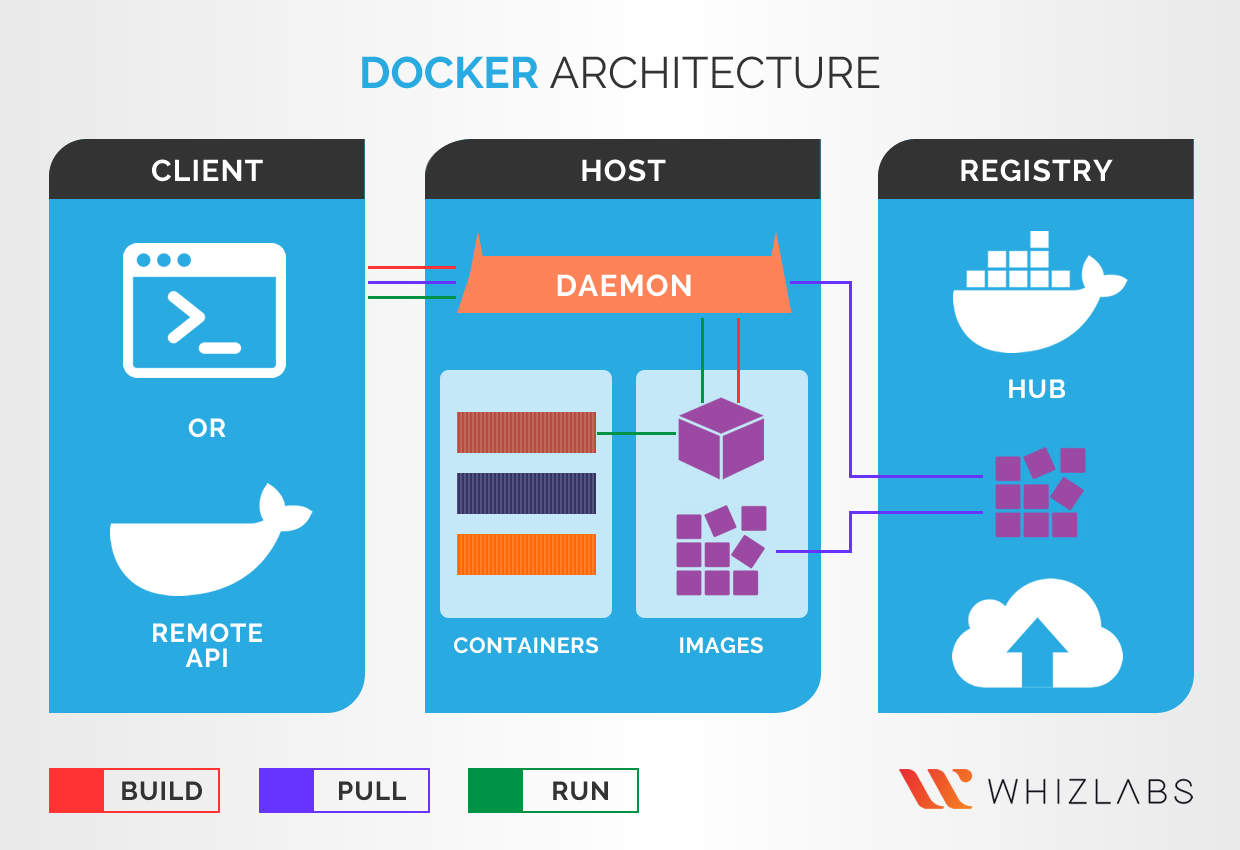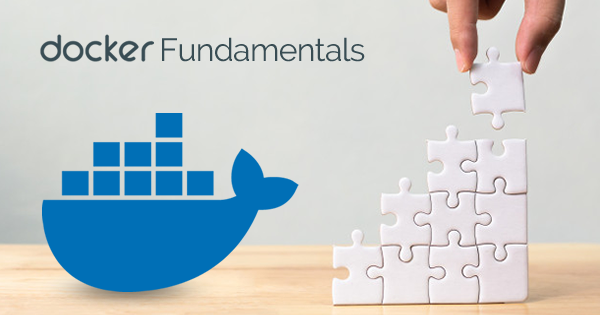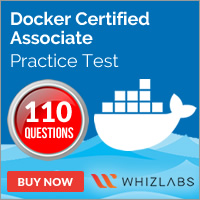As a techie, you must have come across the docker frequently. If you are wondering what it is, let’s give you a brush up on docker fundamentals.
Professionals see docker as an uncontainable trend that is growing exponentially among organizations, which is why you can also find docker certification courses being available for docker fundamentals. We must go through a quick knowledge of what is docker and its benefits to get a basic idea about it.
Docker has gained immense popularity in the IT industry because of the extent of application and usage flexibility it can offer. It is a tool that is commonly useful for both developers and system administrators collectively. You can easily prepare and build your application, containerize them using docker based on their dependencies into containers, ship to be executed, and run into other machines, making working easier.
Docker and containerization are seen as an improvement or to be more precise, an extended version of Virtualization. A virtual machine can be used for executing the same task. Still, it doesn’t seem to be as efficient as docker is. So, let’s dive deep to understand the docker fundamentals.
What is Docker?
To define in simple terms, Docker is a developer tool to assist developers and system admins in deploying applications in containers to effectively run them in host operating systems like Linux. It’s an overall platform used to develop, ship, and running applications.
It is a significant tool to separate your applications from the applications software structure to deliver the software quickly. The docker’s infrastructure can be managed just like software management, and the interface is also easy. Containerization is another popular term tagged with Docker. Containerization is the term coined for using containers to deploy applications in a Linux platform. It was nascent in the tech world in the year 2013, and from then it is one stable content for modern developments in technology.
Uses of Docker are:
- It helps to use the tooling to create and use containers for developing your required applications.
- The container becomes an entire unit that can be used for distributing and testing the developed applications.
- The system can use deployed and tested locally, on cloud services or even tested on a hybrid mix of the two.
Understanding the Docker Architecture

Docker architecture follows the client-server model. The Docker client communicates with the Docker daemon, which does the heavy lifting of building, running, and distributing your Docker containers. Docker architecture has several components like:
- Docker Client (CLI): a facility used to trigger docker commands
- Docker Host: command for running docker daemon
- Dockery Registry: or also termed as docker hub is a registry for storing docker images
A docker daemon, when allowed to execute with a docker host, is responsible for the formation and running of images and containers. You need to know the following points to understand how docker architecture works.
- A build command that is issued from a suitable client will trigger the docker daemon to build a Docker image. The docker daemon runs on the docker host which runs the images based on the inputs given by the clients. Once the image is built it is saved in the registry of a docker hub and can be retrieved when required. The docker hub can also be a local repository or cloud-based storage.
- If you do not wish to proceed with the process of creating an image, you can just pull out an image already present in the registry. A different user of the community may have uploaded this image.
- Run command from the client will run the docker image, and for the same, a docker container is created and used.
If you are aspiring to become a Docker Certified Associate, start your preparation now with the Docker Certified Associate Training Course and Practice Tests.
Why is It Recommended to Go for Docker?
Unlike virtual machines, docker does not induce version mismatches when running in different setups. There is no loss in the time and the efforts spent by the developer in creating and running, unlike virtual machines. On a comparative tone between a virtual machine and a docker container, there are three parameters that decide its functionality:
1. Size:
the base of this comparison falls on the amount of resource that is utilized by Docker or virtual machines while running. Docker comparatively use lesser storage space, which can be reutilized for creating more containers while that is not the case with virtual machines.
2. Startup:
On the amount of boot time utilised, this comparison is made. Since the operation of the guest server starts from scratch, boot time is higher in the case of virtual machines.
3. Integration:
The basis of this comparison is the ability to integrate with other tools easily. DevOps tools in VM are very limited, and so is its functionality. However, in docker, several instances can be set, making its functionality easier.
Why are docker containers popular?
Containerization and Docker containers are very popular terms used invariably by techies around the globe. And it is identified to be equally useful with the number of features it has to offer which includes:
- It offers high flexibility in usage. Any type of complex applications can be containerized and that too easily.
- Updates and upgrades on the deploy can be interchanged easily.
- The docker can be built locally, upgraded to be deployed to the cloud and can be run anywhere. The portability feature of docker is very high.
- Container replicas can be created and scaled easily and increased with efficiency.
- On the fly- the docker services can be stacked vertically.
Features of docker
The docker facility allows users to condense the developed application size and assists in producing a smaller trail of the operating system when containers are used. Containers are a system that helps in interacting across the different sectors and borders of the company. With docker, different teams of an organisation can correlate and work together easily.
Docker are featured with an option to run on any platform. It can be used locally, deployed and tested on cloud platforms also. Further, even a hybrid environment can be used for running and testing the application. Further, scalability is not at all an issue with docker and deploying containers.
Docker are lightweight files, making it very cost-effective and space-friendly. Taking up lesser space, you can use the saved capacity for other work-related goals. It’s suitable for smaller to medium size deployments in work-related issues.
Getting started with docker tutorial
Docker fundamentals are easier to handle, and you don’t have to be a pro for it. For getting started with docker, there are no prerequisites or skills required. A piece of basic knowledge with cloud services and web applications development will help you through the process. However, it is not a mandatory thing. The entire docker tutorial for installation is listed out here.
- Docker can be supported across different OS platforms. Setting up of docker in your computer with required tooling can be easy. Initially, there were laid back problems faced with OSX and windows which was them testified to make it work like never before. So start with the docker install. A prompt “hello world” proves you that the installation is done correctly and your docker application is running fine.
- Before the actual installation, its good to ensure that the Linux kernel 3.8 above is installed in your personal computer. Docker are supported in such versions or higher. Install the OS with latest versions helps you work better.
- The next step would be to add certifications needed for working of the docker by installing them. Installing necessary packages can help in running easily and smoothly.
- Adding a GPG key will be the next step in the Docket tutorials for encrypting all the data.
Try Now: Docker Certified Associate Free Test
Docker files
The file which contains the sequence of commands for creating a docker image is termed as docker files. These files are provided with a suitable functional name and are executed with a docker command; this results in the docker images. This setup after installation forms a part of the docker fundamentals and a quick start to learning docker. When the docker image is set to run using the “docker run” command, the application may start execution by itself locally or on the cloud as per requirement.
A docker hub, on the other hand, is a location to store all the docker images. A docker hub acts like a cloud registry that holds data of all uploaded docker images uploaded by several users of a community onto the cloud file. Even you can develop your own docker image that can be uploaded to the docker hub.
A docker composes lets you run several docker container files on a single server system efficiently.
Docker engine
To put it very simple, a docker engine acts as a heart of any docker system. A host system that is installed with a docker application is technically termed as a docker engine.
- A long type of running process in docker termed is defined as a daemon process.
- The actual meaning of a client (CLI) is a command-line interface.
- For a virtual communication between CLI client and Docker daemon, a REST API is used.
Enroll Now: Docker Swarm Basics Online Course
Final Words
So, here we cover a simple explanation for docker fundamentals. Docker is well-recognized as one of the important DevOps tools. So, if you want to advance your DevOps career, you need to be familiar with this DevOps tool. The information mentioned above will help you understand the fundamentals of Docker.
Once you have gained some knowledge, you can validate your skills with the Docker certification and become a Docker Certified Associate. We are pioneers in the online certification training and to help you in your preparation, we offer Docker Certified Associate online course and practice tests. So, if you want to take your career ahead, start your Docker journey now!
- Top 10 Highest Paying Cloud Certifications in 2024 - March 1, 2023
- 12 AWS Certifications – Which One Should I Choose? - February 22, 2023
- 11 Kubernetes Security Best Practices you should follow in 2024 - May 30, 2022
- How to run Kubernetes on AWS – A detailed Guide! - May 30, 2022
- Free questions on CompTIA Network+ (N10-008) Certification Exam - April 13, 2022
- 30 Free Questions on Microsoft Azure AI Fundamentals (AI-900) - March 25, 2022
- How to Integrate Jenkins with GitHub? - March 22, 2022
- How to Create CI/CD Pipeline Inside Jenkins ? - March 22, 2022







Like!! I blog quite often and I genuinely thank you for your information. The article has truly peaked my interest.